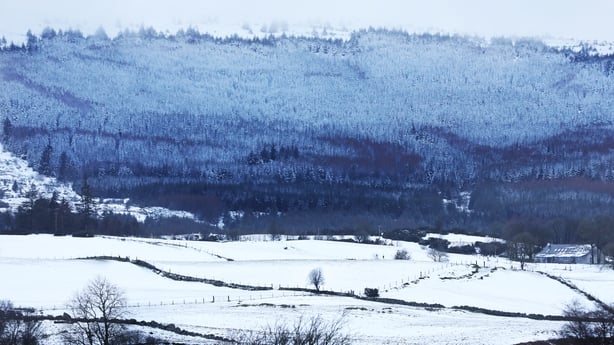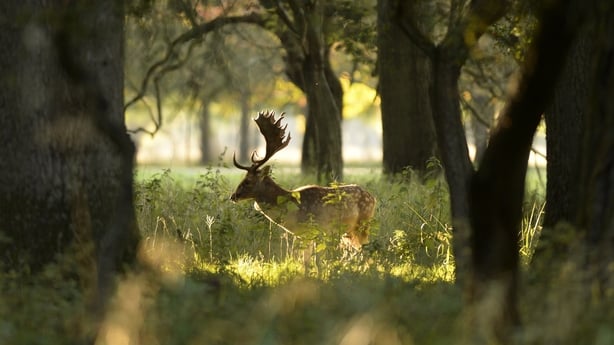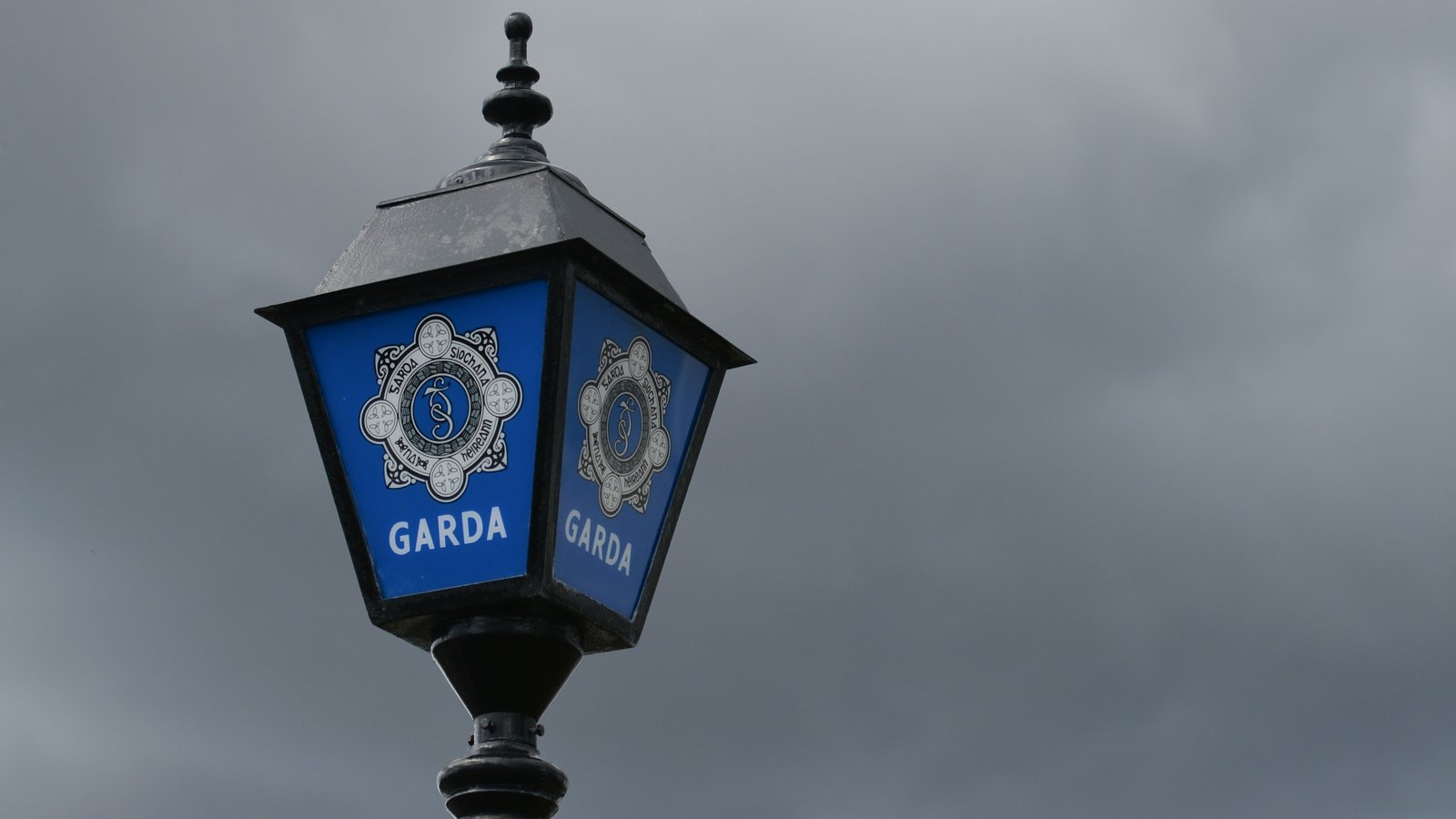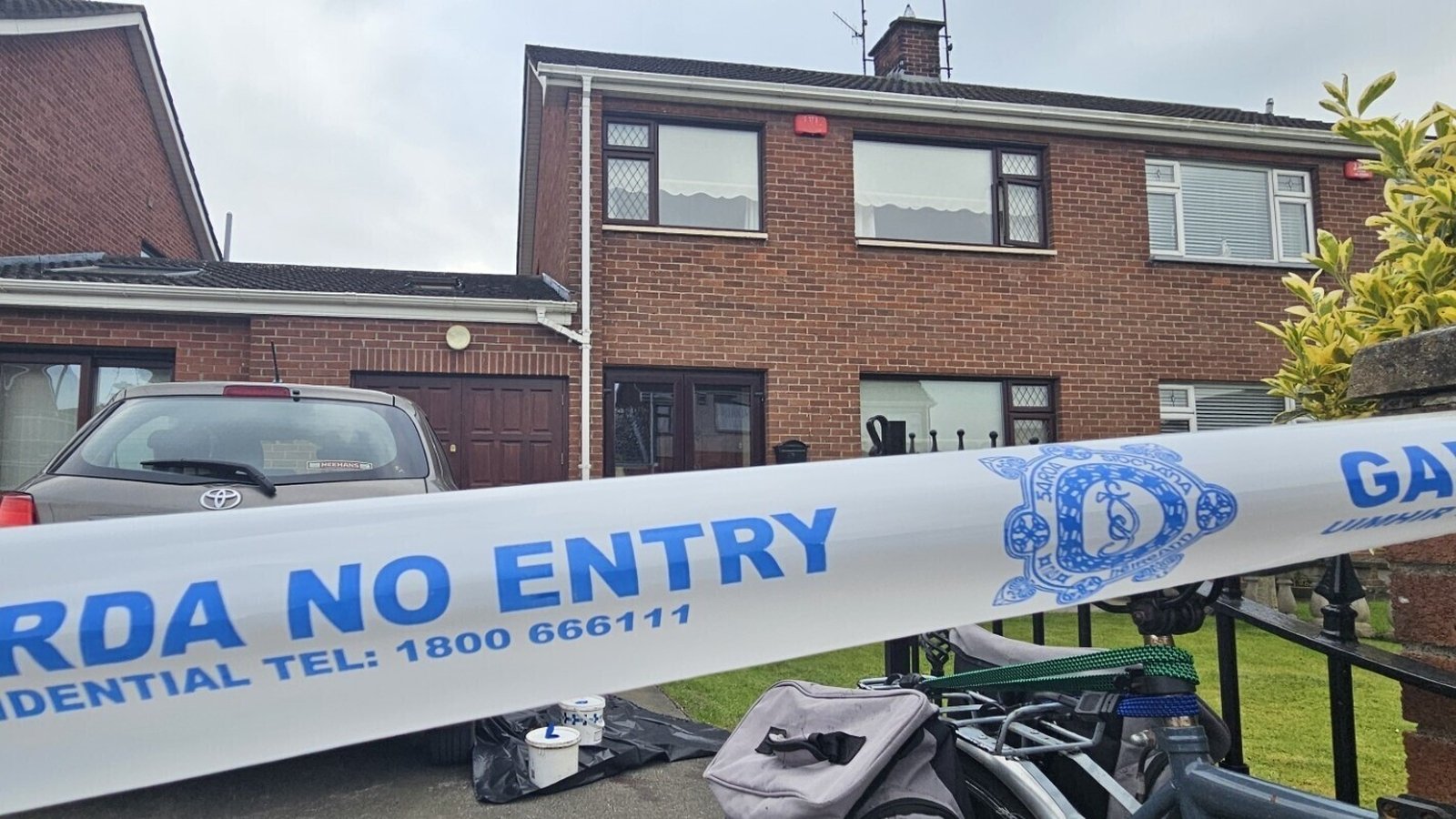Miyawaki method shows dense Irish forest can grow rapidly

A small forestry experiment by a community group in Co Galway has shown that dense forestry can be grown very rapidly in Ireland, without the need for digging provided the ground is primed with manure and nutrients a year ahead of planting.
The local group behind the experiment, which is ongoing in Kinvara, say they are motivated by the need for fast action to tackle climate change and address the biodiversity crisis.
Some of the trees they have planted have grown more than four metres in height in just two years and have already surpassed the performance of trees planted according to the world leading Japanese Miyawaki forestry method.
Meanwhile, general attitudes to forestry are particularly positive in Ireland according to a survey conducted by the research company Behaviour and Attitudes in 2022.
Following face to face interviews with 1,000 adults they reported that three out of every four people want to see more forests in Ireland.
The benefits, or course, are many. Trees help to mitigate climate change by absorbing carbon dioxide from the atmosphere and storing it away.
They provide shelter and cool our towns and cities.
They are essential for biodiversity by providing homes, habitats, forage and cover for a host of creatures.
Trees and forests help improve air quality, water quality, flood mitigation and prevent soil erosion.
There are enormous benefits in terms of health and wellbeing and recreation for people too.
National Tree Week, which ends next Sunday, has been an annual feature in Ireland for almost 40 years.
The organisers, Coillte and the National Tree Council of Ireland claim it has been responsible for the planting almost one million trees during that period.
The focus they chose for this year’s National Tree Week is “Planting Trees for a Greener Future”.
It is a theme that is very close to the hearts of community and voluntary groups in many parts of the country who have been doing exactly that over the past few years.

Kinvara Tree Gang
The Kinvara Ballinderreen Tree Gang is one of those groups. It is a small community group in south Co Galway with a mission to plant and care for native trees in the right places to mitigate the effects of climate change and biodiversity crises.
The group includes members of Kinvara Tidy Towns, the local Dolmen Centre for adults with intellectual disabilities, Kinvara Earthkeepers, Transition Year students from Seamount College, pupils from Northampton National School, the Kilcornan Educate Together school and Ukrainians living in the area.
Conscious of the urgings from climate scientists that greenhouse gas emissions need to be cut by 50% by 2030 to prevent runaway climate change, this “Tree Gang” took the view that there was no time to waste and no point waiting for the Government to act.
So, they embarked on a forestry experiment to find the fastest possible way to grow tiny forests in the West of Ireland.
The Tiny Forest concept was pioneered by a Japanese botanist, Akira Miyawaki. He pioneered a special method of planting and ground preparation that can be used to grow forests ten times faster than a typical forest (which usually takes 200 to 300 years).
The method involves various species of native trees and shrubs being planted very close to each other on well-prepared ground.
Usually up to five saplings are planted for every square metre and as a result, the trees are forced to grow upwards for sunlight instead of spreading outwards.
Miyawaki forests are far denser than a normal forest, 30 times better at absorbing carbon dioxide, and can attract a huge abundance of wildlife in a very short period of time. They can be any size.
A local landowner Joe Gormley provided a nearby field. Two ecological organisations, Trees on the Land, and Reforest Nation supplied the trees. Local ecologist, Jen Fisher, provided expertise about the trees and planting.
The Kinvara Tree Gang then split the field into four basic areas.
In the first area they followed the Miyawaki instructions closely. That meant digging up the soil, and mixing in nutrients, mulch, composted horse manure, and seaweed. They even added extra soil to give greater depth and then planted the native trees close together.
In the next area to that they planted the same number of trees at the same density but with no soil supplementation.
Beside that again they have a “control plot”. This is an area of equal size where the trees were planted as normal in Irish forestry planting – one tree per square metre, with no soil supplementation.
In the last plot they decided to enhance the soil a year in advance by simply spreading the horse manure, seaweed, cardboard, and straw on top the ground and letting it rot down naturally without digging it in.
Then they simply planted the trees through simple slits in the soil, but very densely as per the Miyawaki instructions.
This all happened two years and three months ago and the difference in how each mini forest area has performed is remarkable.

The first Miyawaki forest plot, the one where the soil was dug up and enhanced before planting, has performed remarkably well.
It has grown substantially and now significantly dwarfs the trees in the densely planted plot beside it where the soil was not enhanced. The area of traditionally planted trees next to that again has grown the least.
However, it is the trees in the last mini-forest plot – the one where the soil was not dug up but was enhanced before planting – that have stolen the show.
The growth in this experimental plot has been substantial and stunning. The trees here are already very dense and tall. Many are already more than four metres high after two years of growth.
This mini forest plot has very clearly performed even better than the first (and very successful) area planted according to the true Miyawaki instructions.
Members of the Kinvara Tree Gang accept that it is early days yet and only time will tell how each section of their small forest is going to perform in the long run. But there is no doubt they are excited by the findings so far.
Group leader Finola O’Siochru, said the reason her group decided to try the Miyawaki experiment was because of the urgency to act before 2030 in order to avoid all of the climate change tipping points.
“What’s so satisfying really is to see all the rays of growth,” she said.
“What you have here are trees that have only been in the ground for two growing seasons, and they’ve gone most of them from tiny whips to fantastic sized trees. There’s definitely an awful lot to the Miyawaki method.
“We have shown that you don’t need to dig if you are prepared to take the time to compost. That is so important, because it avoids having to break up microorganisms and disturb the soil ecology.
“It also saves the cost of digging which is expensive with big machinery and fossil fuels that are not good for the land.
“You can take the time to lay out your nutrients the summer ahead of planting and then let the earthworms do the work”.
Ecologist Jen Fisher said the group collected a lot of the seaweed for fertiliser themselves and collected cardboard from various shops.
“I just like the idea that you don’t have to have a lot of money to make a forestry project happen if you have buy-in from the community,” she said.
“And we did have a lot of buy-in from the local community here.”
Read more: Planting targets not achievable under programme, foresters say





